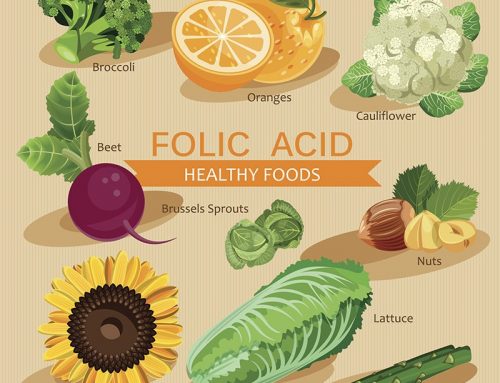On January 31, the US government released the new, 2010 edition of the Dietary Guidelines for Americans.
And there’s not much to write home about.
Here are the highlights:
Sodium
They did a decent job on sodium (though, predictably the Salt Institute is already spinning the recommendations as unfair, digging up some research showing how important sodium is in the diet. What a shock.)
The new guidelines recognize that for a large percentage of the population- not all mind you, but enough- lowering sodium has a good effect on blood pressure. The new guidelines call for 2300 mg a day of sodium (about the amount in a teaspoon of salt) but mention that certain groups for groups at risk for high blood pressure– African Americans, individuals with hypertension, diabetes, or chronic kidney disease and individuals ages 51 and older- respond even more dramatically to sodium reduction, and for these groups the guidelines recommend no more than 1500 mg a day.
Wisely, the guidelines make note of the fact that most of the sodium in our diet does not come from salt added at the dinner table, but from processed foods. Consumers need to pay way more attention to added sodium (in canned foods, processed foods, deli meats) and- in my opinion- much less attention to how much fat is listed on the label.
Fat
Speaking of fat, there’s not much new from here. The demonizing of saturated fat is the same as it’s always been. But sharp eyed readers will note that the only reason given to limit saturated fat is that is associated with higher levels of cholesterol. This is important, because it confuses a lab measure (cholesterol score) with an actual health outcome (like heart attacks). Higher cholesterol is not the same as higher risk of heart attacks or dying.
Cholesterol
Further, the report still uses the old division of “good” and “bad” cholesterol, despite the fact that we now know there are multiple sub-types of both HDL (so called “good” cholesterol) and LDL (so-called “bad cholesterol). Substantial research shows that it is the type of LDL- not the total amount- that matters. Small particle LDL is bad- large particle LDL is harmless. Saturated fat may raise LDL but it tends to have a beneficial effect on particle type, meaning it raises the “good” kind of “bad cholesterol” (large fluffy molecules), not the “bad” kind of “bad cholesterol” (small dense b-b gun pellets). And in any event, cholesterol is a lousy predictor of heart disease. Fully half of all heart attacks happen to people with normal cholesterol, and half the people with “elevated” cholesterol are fit and healthy as the proverbial fiddle.
So once again the powers that be have demonized saturated fat, but not- and this is important- not because it directly leads to a single case of heart disease or a single death, but because in some cases it raises a blood marker which is increasingly being shown to be of minimal importance in heart disease.
The report recommends lowering our dietary intake of cholesterol. This piece of advice is so past its expiration date that I never expected to see it again, even in as conservative a document as the dietary guidelines, but there it is. Let’s repeat: The liver makes most of the cholesterol in your body. Eat less, and your body makes more. Eat more, your body makes less. And for 99 percent of the population, dietary cholesterol has virtually no effect on blood cholesterol. This recommendation is just going to make people continue to fear egg yolks, a big mistake since they are incredibly rich in nutrients (like choline, lutein and zeaxnthin) and a wonderful source of protein.
Sugar
The report does make mention of the problem of added sugars in our diet, noting that at present they account for an amazing 16% of calories in the American diet. These sugars include high fructose corn syrup, white sugar, brown sugar, corn syrup, corn syrup solids, raw sugar, malt syrup, maple syrup, pancake syrup, fructose sweetener, liquid fructose, honey, molasses, anhydrous dextrose and crystal dextrose. The report also notes that the major sources of these added sugars are soda, energy drinks, sports drinks, grain-based desserts, sugar-sweetened fruit drinks, dairy-based desserts, and candy. And the guidelines recommend lowering the consumption of these drinks, a brave move given the incredibly lobbying and spin machines of both the Sugar Association and the Beverage Assocation. Look for their “rebuttal” spin, coming soon to a theatre near you.
Oh, never mind.. it’s already here. And here.
In fact, you could almost hear the committee hedging their bets. Shortly after the recommendation to reduce these added sugars they state that “foods containing solid fats and added sugars are no more likely to contribute to weight gain than any other source of calories in an eating pattern that is within calorie limits”. Sure, there’s a lot of research showing that calories overall are what matters but there’s also a lot of research- and clinical experience- that shows that high carb high sugar diets produce metabolic reactions that make it fiendishly difficult to lose weight by contributing to cravings and blood sugar fluctuations. Minimizing that effect and concentrating only on calories- rather than the very definite hormonal effects that certain calories have—is a missed opportunity.
The Good News
- For the first time, the dietary guidelines actually suggest limiting refined grains (especially refined grains that contain solid fats, added sugars and sodium). This is a really good idea and one I wholeheartedly support.
- The guidelines also specifically say to keep trans fat consumption as low as possible and wisely makes the distinction between man-made trans fats (hydrogenated and partially hydrogenated oils) and naturally occurring trans fats like the CLA found in the meat of grass-fed cows.
- The new dietary guidelines also explicitly say that half your plate should be taken up with fruits and vegetables, something even a low-carber like me can totally support.
- Finally the recommendation to limit alcohol to two drinks a day for men and only one for women- is wise and in keeping with the research.
The Bottom Line
When all is said and done, it’s helpful to remind ourselves who actually issues the Dietary Guidelines for 2011: the US Department of Agriculture and the Department of Health and Human Services.
But let’s remember that the USDA isn’t some impartial, scientific group detached from industry input or economic considerations. For years, investigative reporters have pointed out the very close ties between the agency and the meat and dairy industries, pointing to the USDA’s dual and conflicting mandates to both regulate the safety of beef and also to promote its sale. And the influence of industry lobbyists on food policy is undeniable and has been chronicled in loving detail by such writers as Marion Nestle in her excellent book “Food Politics”.
But I digress.
All in all, I see the new dietary guidelines for 2011 as tiny steps in the right direction lost in a sea of “same old, same old” and not likely to make much of a dent in the eating habits of Americans.














Leave A Comment